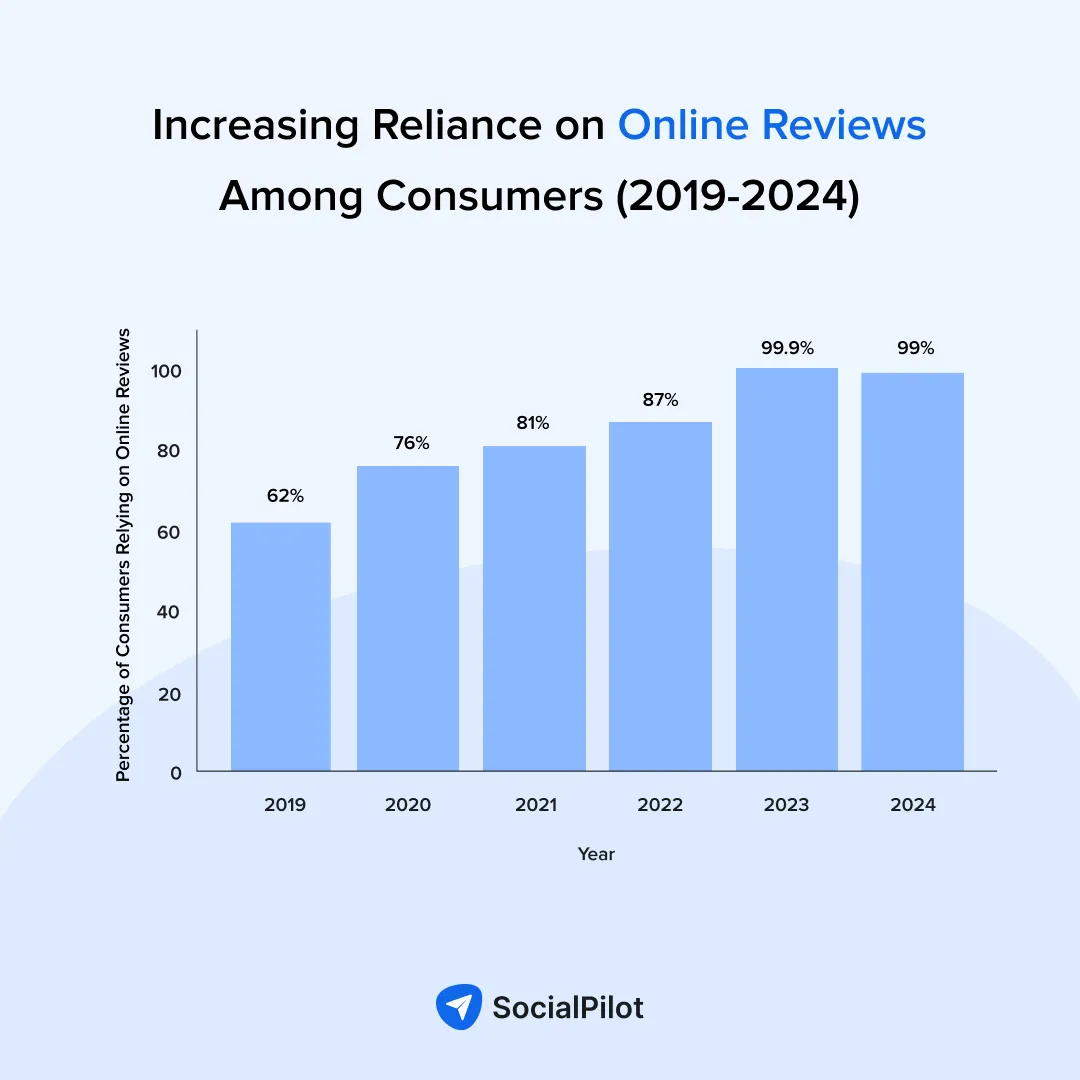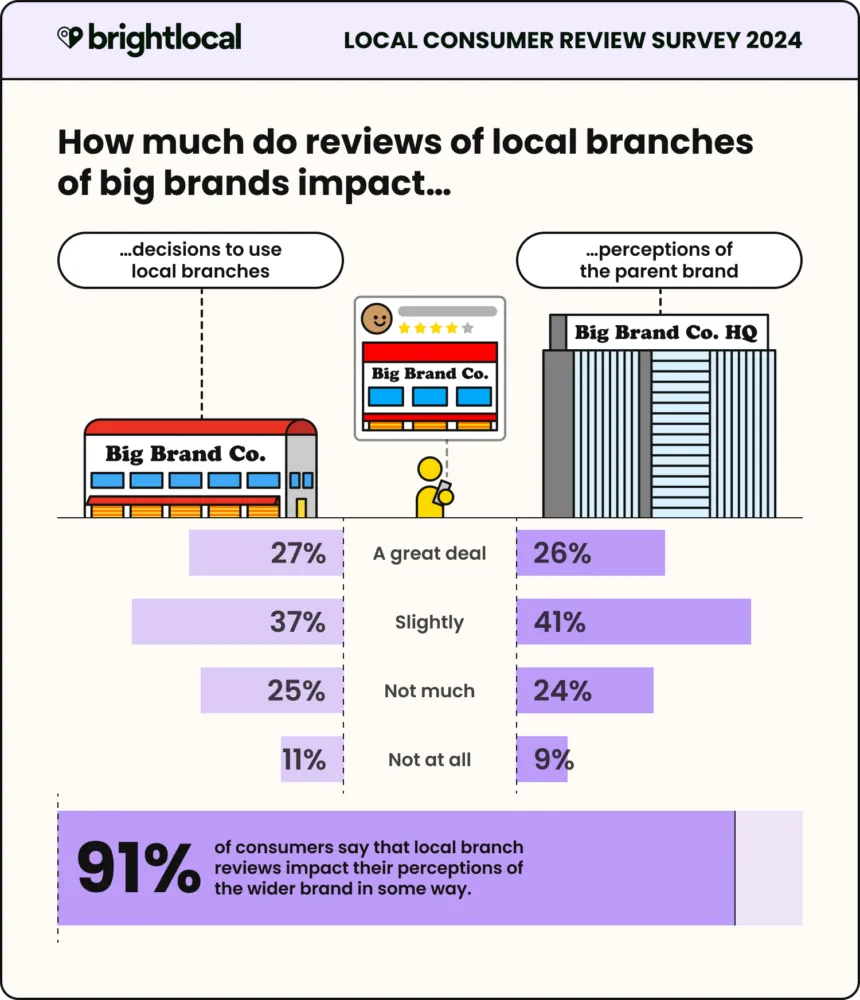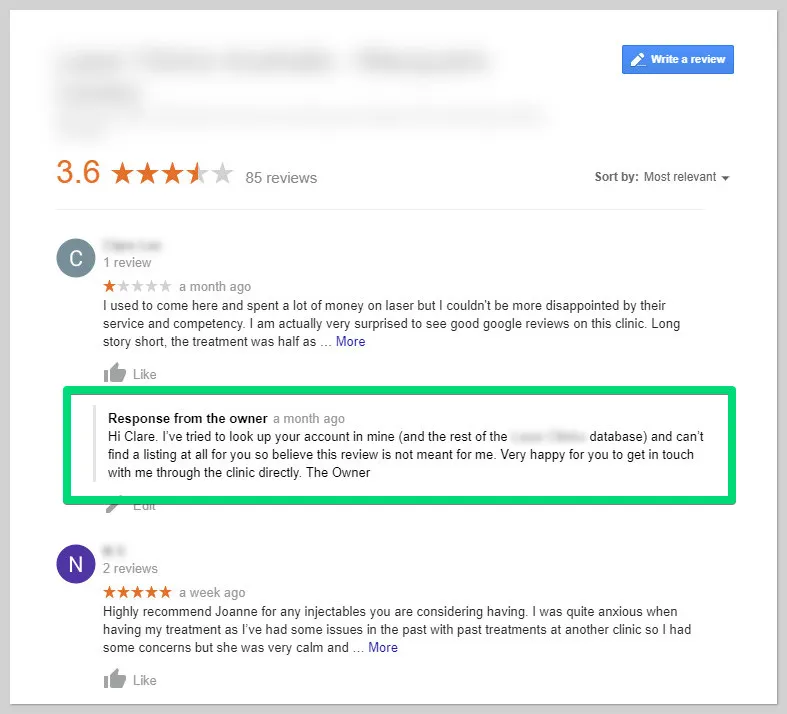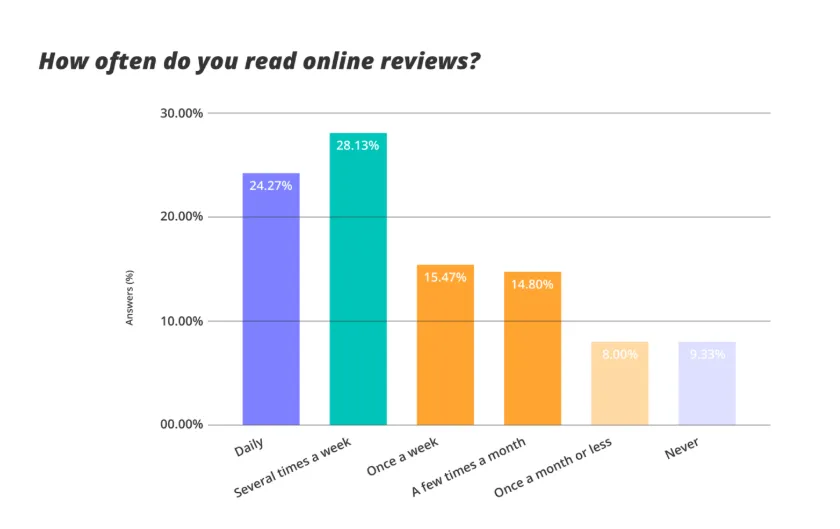Wondering how online reviews impact your business? Review monitoring is essential—not just for tracking feedback but for building trust, improving customer experiences, and protecting your brand.
Picture this: you’re running a cozy café. A negative Yelp review appears, but you don’t notice it for a week. By the time you do, potential customers have already seen it and chosen other options.
Now imagine catching that bad review immediately and responding on the spot. You could turn the situation around, showing customers you care about their feedback.
That’s the power of efficient online review management. It allows you to respond quickly and build trust, but managing reviews across multiple platforms isn’t always easy.
However, it isn’t easy to monitor all review platforms. This blog will tell you why it is important to keep an eye on online reviews and give you some practical tips on preserving your brand’s credibility.
Why Online Review Monitoring Is Critical for Your Business
In today’s world, a single review can influence thousands of potential customers. If you’re not tracking what people say about your brand online, you risk losing sales, facing PR problems, and missing out on important customer feedback.
Here are a few reasons why managing your online reviews should be a top priority.
1. Directly Influence Purchasing Decisions
Did you know that over 99% of consumers check online reviews before buying?
Reviews aren’t just opinions—they’re powerful tools that drive purchasing decisions, influencing 93% of shoppers.
Positive reviews build trust and boost conversions, while negative or outdated ones can make potential customers think twice. Your reviews are your brand’s social proof—manage them well to keep the trust flowing.


2. Essential to Decision Making
Online reviews heavily influence how customers perceive your brand. A single unattended complaint can signal indifference, driving potential buyers to competitors. Engaging with reviews shows you value customer feedback, helps resolve issues, and strengthens trust—key factors that shape purchasing decisions.
3. Responding to Reviews Strengthens Brand Credibility
Reviews impact customer decisions and brand reputation significantly. According to BrightLocal’s 2024 survey, 91% of consumers say reviews of local branches affect their perception of the parent brand.
For example, poor reviews for a local outlet could harm the overall brand’s image. Responding to all reviews boosts trust, as 88% of consumers prefer businesses that engage with customer feedback. Addressing reviews effectively helps maintain a strong reputation.


Challenges Users Face in Review Monitoring
Customer review monitoring can feel like a juggling act when new comments pop up on Google, Facebook, or niche forums at any moment.
If you miss even one review, you lose the chance to fix a problem or thank a loyal fan. Before you know it, you’re bouncing between sites and dealing with inconsistent replies.
Let’s explore the main obstacles people face and find simple ways to stay on top of it all.
1. Managing Multiple Platforms
Managing reviews on platforms like Google, Facebook, Yelp, and Trustpilot is hard. Switching between platforms takes time. It’s easy to miss feedback. Keeping a consistent brand voice is even harder.
Without a strategy, unresolved complaints and uncelebrated praise can harm your reputation.
Simplify review management with these steps:
- Centralize Tools: SocialPilot Reviews let you monitor and reply in one place.
- Use Templates: Pre-write responses for common review types to save time and stay consistent.
- Set Clear Rules: Reply within 24-48 hours and customize responses to fit each review.
- Train Your Team: Ensure everyone follows brand voice guidelines and review etiquette.
Consistent and timely responses not only enhance your brand’s credibility but also demonstrate your commitment to customer satisfaction.
2. Staying Consistent with Responses
Responding to online reviews may initially seem simple, but it often becomes overwhelming. You start with good intentions but soon realize that juggling multiple platforms, tones, and expectations is harder than it looks.
One reply sounds overly casual, another too formal, and suddenly, your brand voice feels inconsistent. This confuses customers and weakens your credibility.
Once you have a system set up for review monitoring, you simply need to know the dos and don’ts of responding to negative reviews.
Without a solid strategy, staying consistent can feel like an impossible task—but it doesn’t have to be.
The key to a good brand is staying in one voice as you respond to questions. Here’s how to achieve it:
- Your brand voice: Pick if your answers will be polite, serious, or casual. Clear speech guarantees consistency of all replies.
- Publish response templates: Create templates for typical review scenarios. This reduces reply time and ensures consistency.
- Use centralized tools: Use a platform such as SocialPilot Reviews or Birdeye to handle and answer all the reviews on a single platform. This ensures that your answers are consistent and timely.
- Establish response rules: Define strict response times and customization. Try to reply within 24-48 hours, and remember to tailor your response to the specific details of the review.
- Educate your employees: Ensure all employees handling reviews understand the brand’s tone of voice. They should follow clear response guidelines. Regular training helps maintain consistency.
Inconsistent responses can confuse customers and weaken your brand’s identity. These strategies help every reply show your commitment to customer satisfaction. They also keep your brand voice consistent across all platforms
3. Identifying Fake or Spam Reviews
About 30% of online reviews are fake, and this number continues to rise. Competitors may leave harmful reviews, while some brands plant fake praise. These reviews distort public perception, hurt credibility, and mislead customers if left unchecked.
Spotting fake reviews is tricky. Fake reviews often use generic language or appear with odd timing. They can look real at first glance but damage your reputation over time.
How to Handle Fake Reviews:
- Stay Calm and Professional: Avoid emotional responses. For example, in the image above, the owner politely clarified they couldn’t find the reviewer’s record and invited them to resolve the issue offline.
- Highlight Inaccuracies: Address the review factually, pointing out discrepancies without being defensive.
- Report the Review: Platforms like Google and Yelp allow you to flag and report suspicious reviews for review removal.
- Use Tools to Identify Patterns: Tools like Reputation.com help track unusual review activity and manage responses efficiently.
By responding calmly and factually, as shown in the example, you can protect your brand and maintain customer trust while tackling misleading reviews effectively.


How to Monitor Online Reviews Effectively
Keeping an eye on what people say about your business online is easier with the right steps. Here are two important ways to do it well:
1. Prioritize Platforms That Matter Most
Not all review platforms are relevant to every business. Focus your efforts on the platforms your target audience uses most.
- Google Business Profile: Essential for local businesses. Here, positive reviews help in increasing your search results and establishing credibility among prospective clients.
- Yelp: Great for restaurants, cafes, and service providers. Having a good Yelp profile can also help increase foot traffic.
- Trustpilot: Designed for e-commerce and technology businesses. It builds trust among customers who are looking for your products or services.
- Industry-Specific Platforms: Depending on your niche, platforms like TripAdvisor (travel), Zocdoc (healthcare), or G2 (software) may hold value.
By narrowing your focus, you’ll maximize impact while saving time and effort.
2. Conduct Manual Review Monitoring
Manually monitoring reviews demands time and effort. It involves checking multiple platforms like Google, Yelp, and Facebook daily. This process ensures you catch every review, but it’s not scalable. Missing a review or delaying a response can hurt your brand’s image.
While manual monitoring helps maintain a personal touch, it’s easy to overlook reviews or fall behind. As the volume grows, the process becomes overwhelming, making automation a necessary next step to ensure consistent and timely management.


If you’re manually monitoring reviews, it’s a time-intensive but effective way to stay engaged. Here are some ways to do it:
Set Up Google Alerts
Use Google Alerts to track mentions of your brand, product, or keywords online. Customize alerts to include variations of your name or products. This ensures you get notified as soon as a review is published. It’s free and easy to set up.
Check Social Media
Regularly check Facebook, Twitter, Instagram, and LinkedIn for mentions, tags, or reviews. Search for related content in social media and online posts by using the search function of the respective service. This will enable you to promptly address the audience. What is more important, though, is that you show your concern by being on time with your responses.
Browse Review Sites
Visit review sites like Yelp, Trustpilot, and industry-specific platforms weekly. Look for new feedback and sort by recent posts. Analyze patterns in comments to identify strengths or weaknesses. Pay special attention to negative reviews, and respond politely to resolve issues.
Review Feedback Forms
Analyze the opinion from surveys and forms submitted by customers. Find common complaints or compliments. Classify the data in order to identify important issues and opportunities. This feedback reveals some aspects that are missing from public opinion.
3. Use Review Monitoring Tools
Manual monitoring can feel overwhelming, especially as reviews pile up across multiple platforms. Constantly switching between websites, social media, and email alerts takes time and energy.
It’s easy to miss reviews, leading to unanswered feedback. This can hurt your credibility and customer trust. Tracking everything manually becomes nearly impossible as your business grows.
That’s where you need a review monitoring tool like SocialPilot Reviews!
SocialPilot Reviews offers a streamlined solution to this chaos. It centralizes your review management, making it easier to track, analyze, and respond to feedback—all in one place. With features like automated AI responses, review request campaigns, and review monitoring, it transforms how you handle customer feedback.
They streamline the process and save you time. Here’s how they help:
- Streamline Review Requests: Automate sending review requests to customers after purchase.
- Centralized Review Monitoring: Aggregate reviews from multiple platforms into one dashboard for easy monitoring.
- Automatic AI Responses: Automatically respond to reviews using the AI capabilities to maintain a consistent and positive brand image.
Switching to a tool like SocialPilot Reviews ensures you never miss a review, saves time, and helps you maintain a positive brand image.
Conclusion
Online review monitoring is critical for gaining trust, increasing customer satisfaction, and safeguarding your brand. Reviews shape people’s perception of your business and make their choices.
Start monitoring and replying to reviews using tools such as SocialPilot Reviews. Automate, send real-time alerts, and have dashboards centralized to make it easier. You’re never too late to correct a mistake or rejoice in feedback.
Set up a review monitoring system today. Keep your brand strong, your customers happy, and your business growing.
